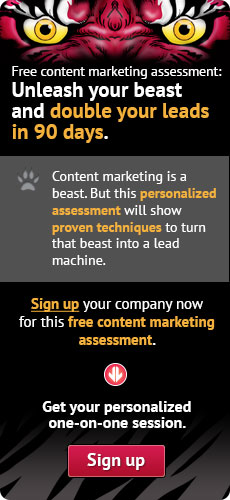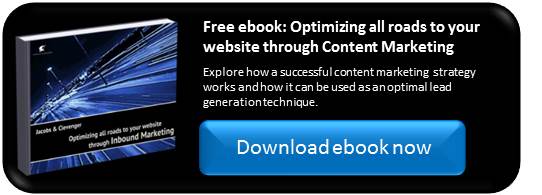
J&C Blog
Find all the latest marketing trends on the J&C Blog.

Find all the latest marketing trends on the J&C Blog.
All too often, when businesses begin crafting a marketing strategy, they default to promotion.
All of that promotion often turns stagnant when it comes time for messaging – just reiterating the same old messages about products and services. Sadly, when businesses do this, they start to sound like a horrible infomercial. Anyone who lived through the 1990s I am sure can still picture Billy Mays yelling at them through their television screens during the OxiClean commercials.
While many of us still recall these ads or have permanently suppressed them due to scarring memories, very few people can say they resonated with them. What this ad fails to ask is, “What does the customer need or want to hear?” Instead, it only focuses on promoting with the company’s benefit in mind.
Bombarding customers with promotional content is not the most efficient way to drive sales. It only aggravates customers and alienates them by ignoring their needs. Today, marketing strategies are moving away from promotion and moving toward need-based strategies like content marketing. Content marketing is a strategic approach focused on creating valuable, relevant and insightful content that engages and retains the audience.
According to research conducted by the Custom Content Council, 78% of people believe that organizations providing custom content are interested in building good relationships with them. Therefore, instead of alienating consumers with promotions, providing valuable content helps build strong customer relationships.
As marketing evangelist Guy Kawasaki said, “You’ve got to earn the right to promote.” Content marketing does just that as its purpose is to deliver value to its consumers as opposed to simply pitching or, in Billy Mays’ case, yelling.
Replace promotion with value
Valuable and useful content inspires customers to interact with businesses early on in the buyer’s journey. With this in mind, the key to developing a successful content marketing strategy is to identify a problem or topic that is of interest to the consumer and provide a solution through content.
For example, today information searches make up 75% of blog traffic. This means that most readers find blog content as a result of an Internet search. In most of these cases, the consumer is looking to gain insight or find a solution through the search. In my own experience, I can think of hundreds of times where I searched for the answer to the most rudimentary question like “How do I check if my car oil needs to be changed?” But in doing this search, I not only gained insight into my question, but became familiar with the repair shop that provided the answer, and when the time came to change the oil in my car, I bet you can take a lucky guess as to what repair shop popped into my mind.
The most successful content provides the consumer with free, valuable information or entertainment. By doing this, a business begins to build a relationship with the customer early on in the buyer journey, thereby preparing the consumer to be more receptive to promotional content later on.
Personalization
Refraining from overt self-promotion or what I like to call the Billy Mays complex is only half the battle when creating an effective content marketing strategy. The second challenge is to ensure that content being created engages the audience. According to the Content Marketing Institute, 88% of B2B marketers and 89% of B2C marketers are either currently focusing on creating more engaging, higher-quality content or planning to in the upcoming year.
With this in mind, one of the most effective techniques for engaging the audience is to create more personalized content. According to HubSpot, 90% of consumers admit that they find custom content useful. Therefore, by personalizing content, businesses create content that adds insight into customers’ inquiries. In order to successfully do this, companies first have to understand the needs and wants of the audience.
The simplest way to understand the audience is to first define them by creating buyer personas. Buyer personas outline characteristics that are common to a business’s ideal consumer. When creating personas, businesses are able to look at characteristics, traits, wants, needs and habits that are common to the target audience and create content that is in line with them.
Build loyalty
While self-promotion should not be used as a sole marketing activity, this is not to say that it cannot be implemented into a marketing strategy. Content marketing strategically combines educational content with promotion. The key is to give the consumer a reason to engage with a company before considering a promotion or purchase.
For example, within the automotive industry, a customer could be searching for information on car maintenance early on in their decision making process similar to my search on car oil changes. Consumers may even search for such information before they actually decide to engage in a transaction. Through their search, they could read a company blog article outlining the steps of proper car maintenance. In this situation, this piece of content acts as the first interaction or introduction between the consumer and the company.
Every touchpoint between the consumer and a business must provide the consumer with a valuable reason to engage with the company. As Steve Jobs said, “Get closer than ever to your customers. So close that you tell them what they need well before they realize it themselves.” Therefore, creating deeper engagement with the consumer means developing an ongoing relationship with customers even before they make the purchase. This enables companies to familiarize the consumer with their brand before making a promotional offer.
The appeal of subtlety
Customers don’t enjoy marketing promotions or advertisements that constantly tell them to buy this or sign up for that. Promotions are very similar to dating tactics. No one succeeds with an overt and cheesy pickup line, but if someone is subtle and acts interested in their prospective date, success is much more likely. Therefore, like dating there is an art to using promotions subtly with customers. By interacting with customers outside of self-promotion and providing them with content that fulfills a need, businesses can create a relationship with customers. By doing this, consumers are more likely to become more receptive to promotional content down the line.
Content marketing enables businesses to create an indirect promotional appeal to customers as opposed to overtly saying, “Buy now.” While providing value before promotion is an effective content marketing strategy, this is not to say that the end goal is not to generate customers and sales. Therefore, by creating content that the consumer interacts with prior to purchase, content marketing focuses on first generating traffic and then converting that traffic into leads and finally loyal customers.
If you’re looking for more information about how content marketing works, check out Jacobs & Clevenger’s free Content Marketing Case Study.
Topics: Inbound Marketing
303 E Wacker Drive, Suite 2030
Chicago, IL 60601
Phone: 312-894-3000
Fax: 312-894-3005